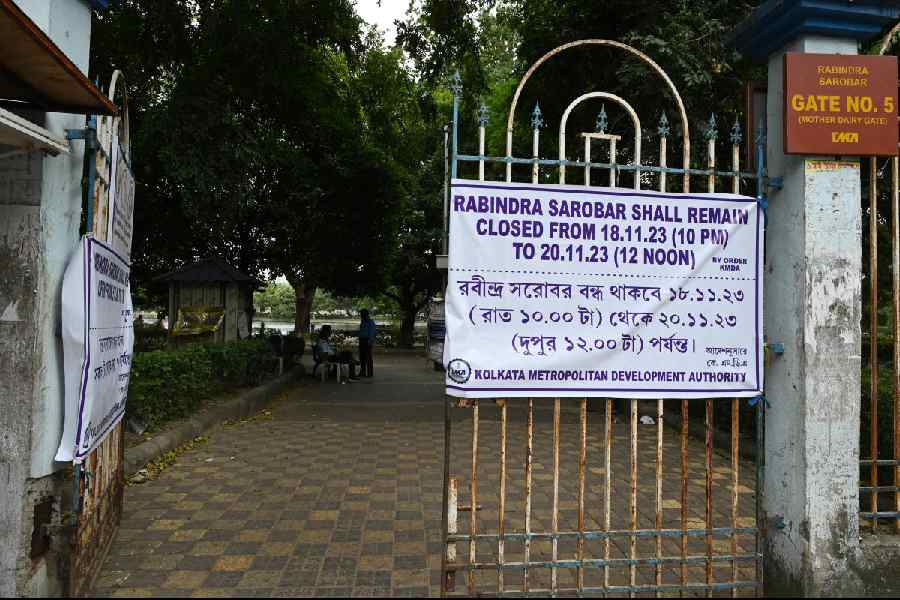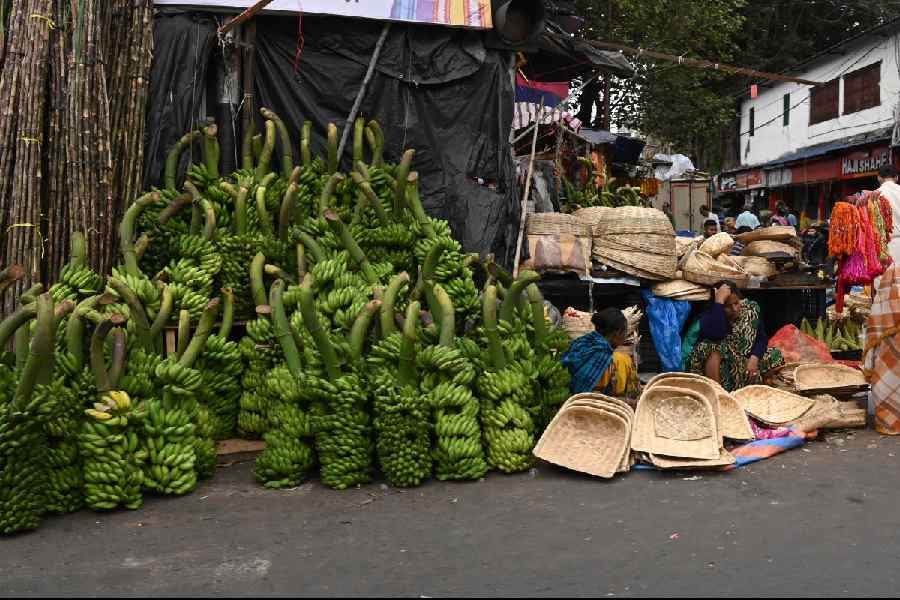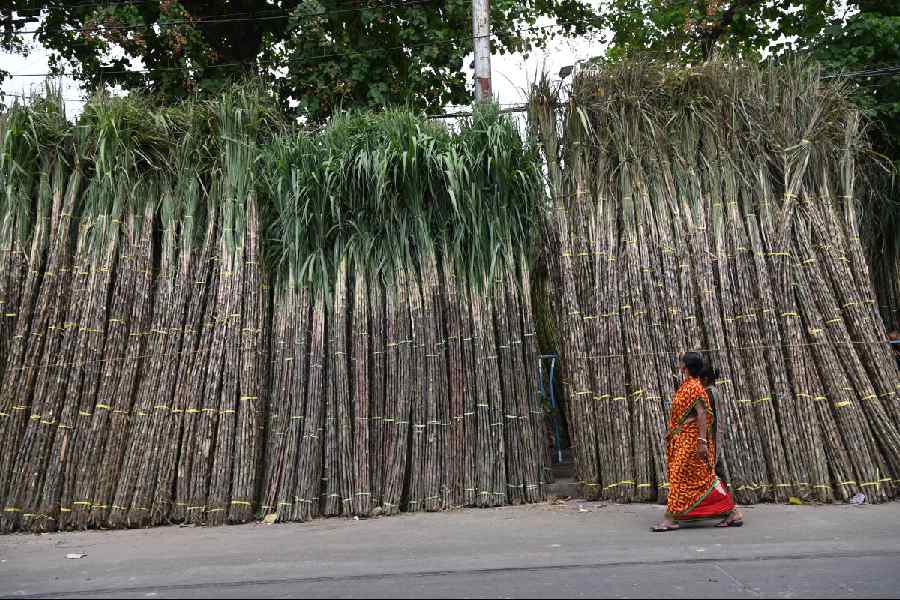Over 150 ghats, including 16 along the Hooghly, will be kept ready for Chhath Puja rituals, officials of the Calcutta Municipal Corporation (CMC) and the Calcutta Metropolitan Development Authority (CMDA) said on Friday.
Chhath Puja rituals will be performed on Sunday evening and Monday morning.
Calcutta High Court has said only green crackers can be used between 6am and 8am on Chhath Puja, which means there is only a two-hour window on Monday morning to burst crackers.
“There shall be a complete ban on the sale and bursting of all kinds of firecrackers, except green crackers in the state of West Bengal,” the court said.
Rabindra Sarobar, where devotees broke in violating orders in 2018, will remain closed between 10pm on Saturday and Monday noon. The CMDA, custodians of the Sarobar, has put up notices and banners announcing the closure.

A CMDA notice on a gate of the Rabindra Sarobar on Friday says the water body will remain closed.1 between 10pm on Saturday and noon on Monday.
Subhas Sarobar, too, will be closed during the duration.
In 2018, thousands of devotees performed Chhath Puja rituals on Rabindra Sarobar premises after some of them broke open the locks on the gates.
The administration did not make any effort to stop them. Religious rituals on the two premises have been barred by the National Green Tribunal (NGT).
“Some of the most popular ghats along the Hooghly for Chhath Puja rituals are Takta Ghat and Doi Ghat. A large number of devotees also visit Gwalior and Baje Kadamtala Ghat,” said a CMC official.

Chhath Puja items being sold in Bhowanipore on Friday.
A number of artificial ponds are also built in many places in the city, including in Panditiya in south Calcutta and Beleghata in east Calcutta.
A CMC official said the organisers do not take any permission to build the artificial tanks and the CMC has no record of how many such tanks are built.
Santosh Kumar Pathak, councillor of Ward 45, said he cleared a ghat near Howrah bridge — Ramchandra Goenka Ghat — of encroachments so that Chhath Puja rituals could be performed there.
Officials of the civic bodies said a large number of ponds in south and east Calcutta will be converted into temporary ghats for the benefit of the devotees.
The officials said since there are large ghats along the Hooghly, devotees from north, west and central Calcutta prefer visiting the ghats along the river. The Hooghly flows along Calcutta’s western boundary.
Residents of south and east Calcutta find it difficult to reach the ghats along the Hooghly because of the distance.
“This is why we built temporary ghats in the water bodies. We have also built permanent infrastructure in some of the water bodies in Anandapur,” said a CMDA official.
Each of the ghats will have sufficient lights, changing rooms, toilets and drinking water facilities, said a CMC official.
The official added that devotees often go to water bodies near their homes where the infrastructure is not created and urged them to visit the places with better facilities.
Use of loud music — colloquially called DJ — is not
allowed during the celebrations.
Despite the ban on firecrackers during Diwali, the crackers were burst indiscrimiately for several days before and after the festival. It remains to be seen whether the rules are followed during Chhath Puja.
